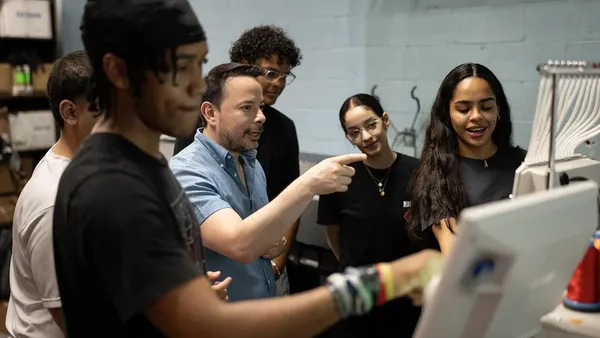Dive Brief:
- At Fort Mill School District in South Carolina, art is embedded across the curriculum, with STEAM leaders working with teachers in all disciplines to bring art — as well as science, technology, engineering and math — into every aspect of students' educations, District Administration reports.
- Based on the idea that creativity drives innovation, the district uses art to open students’ minds and encourage them to use creative mindsets in all classes and to embrace problems and develop solutions.
- But the professional development required to bring the STEAM initiative to life is challenging. One teacher from each of the district’s 17 schools spends five days learning how to apply problem-based learning, designing and planning into STEAM curriculum units.
Dive Insight:
A lack of pertinent software applications and time allocated at school for fostering creativity may be limiting these opportunities, and few states have incorporated arts into their Every Student Succeeds Act (ESSA) accountability systems.
However, students are entering a job market that requires creative problem solving, high levels of communication, flexibility and the ability to develop and maintain relationships. Bringing art back into the classroom is one way to help develop more well-rounded students.
A study by Adobe found that approximately 85% of policymakers and educators believe that students with creative problem-solving skills will get higher-earning jobs. It also found that art and creative classes are one avenue to help students get there.
Another recent report showed that art education cut the percent students in Houston's Arts Access Initiative who receive disciplinary infractions by 3.6%. Also, researchers found that elementary students in the study (86% of the 10,548 student sample) also had improved school engagement, college aspirations and arts-facilitated empathy.











